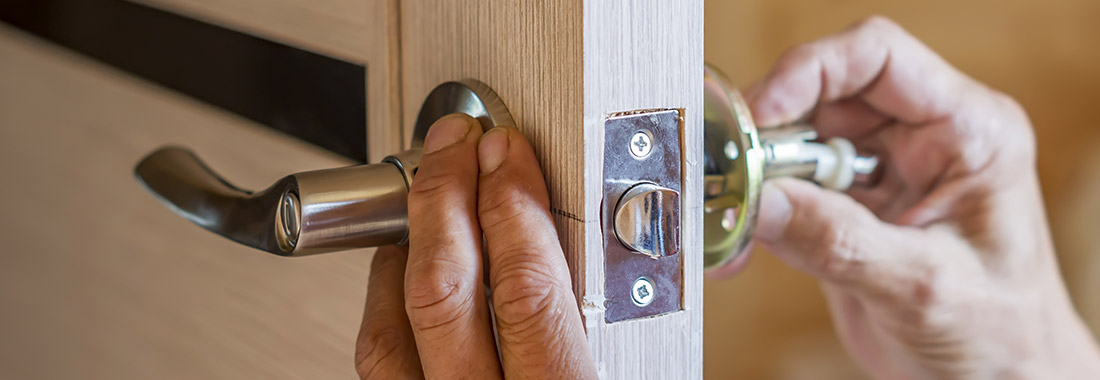How To Hang An Internal Door
August 3, 2020

Replacing an internal door may seem a daunting task requiring advanced DIY skills. But with this guide, we will show you how to fit your new door efficiently.
You will learn how to measure and trim a new door to the perfect size, position and recess the hinges, and hang the door confidently.
As always, ensure you have all the tools and supplies needed before getting started.
Equipment to hang an internal door:
- Pencil
- Wood plane
- Tape measure
- Power drill
- Hand saw
- Screws and screwdriver
- Chisel and mallet
- Workbench
- Sandpaper
- Hinges
Step 1 – Measure the door size
Take accurate measurements of the door frame and use this as a guide when selecting a new door. Be sure to allow a gap of 2mm on all sides to prevent it from sticking or jamming.
If you manage to purchase a new door of identical size to the old, the job will be much easier. If you can't find an exact match, simply lay your old door on top of the new door. This will help to determine how much to adjust it by to fit the frame.
Step 2 – Cut or plane the new door
If an adjustment is needed, move on to cutting the new door to the required size. Use a saw to cut through the excess if a major adjustment is needed. For any minor adjustments, a plane will suffice.
Follow this up with sandpaper of an appropriate grit to create a smooth and even surface. Remember to use protective equipment at all times to safeguard from sawdust and wood chips.
Step 3 – Mark hinge positions
Begin by measuring 10 inches from the bottom of the door and making a pencil mark. Position the hinge on the high-side, with the bottom of the hinge aligning with your mark. Trace the outline of the hinge for morticing, and also make a mark for the centre screw hole.
Repeat the same process for the top hinge, positioned five inches from the top of the door.
If you're fitting a hollow-core interior door, just two hinges may be sufficient. For solid interior doors, a central hinge will help to bear the extra weight.
To align the additional hinge, measure the distance from the top screw mark to the bottom screw mark. Divide this figure in half. Measure from the top screw mark down to this calculated figure, and make a new mark. Align the centre screw hole of the hinge to this and trace the outline.
Step 4 – Create the hinge recesses
This is often the most difficult part of the process, as you’ll need to use an appropriate chisel and mallet to create the hinge recesses. Start out by cutting around the edge of the hinge pencil marks to the required depth. Then make a series of stepped cuts 5mm apart at an angle of 45° over the surface of the marked area.Always chisel with the grain of the wood to prevent it from splitting.
Then carefully removing the wood from the recess using a chisel and smooth the surface accordingly. Use the hinge to accurately mark where pilot holes should be drilled, before screwing the hinges firmly in place with a screwdriver.
Step 5 - Hanging your new door
It can be useful to have a spare piece of wood or packing to hand at this point. This can be used elevate the door above floor level while attaching the hinges. You may otherwise find it difficult to hold it in the right position.
Initially use one screw per hinge to check whether the door swings smoothly without sticking. If you’re not entirely happy with the way the door is hanging, a couple of minor adjustments may be necessary. Loosening the screws slightly can address issues with newly-hung interior doors that rub around the edges. Sanding a little more material away can also loosen doors that are sticking to the frame in one specific area.



